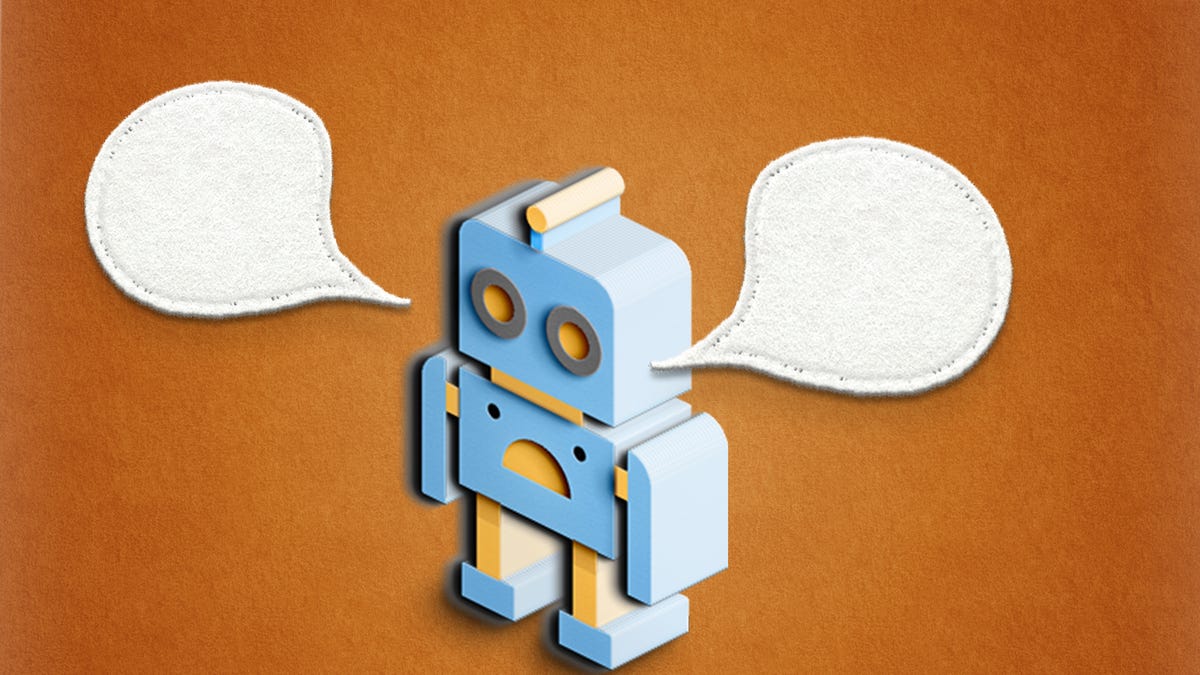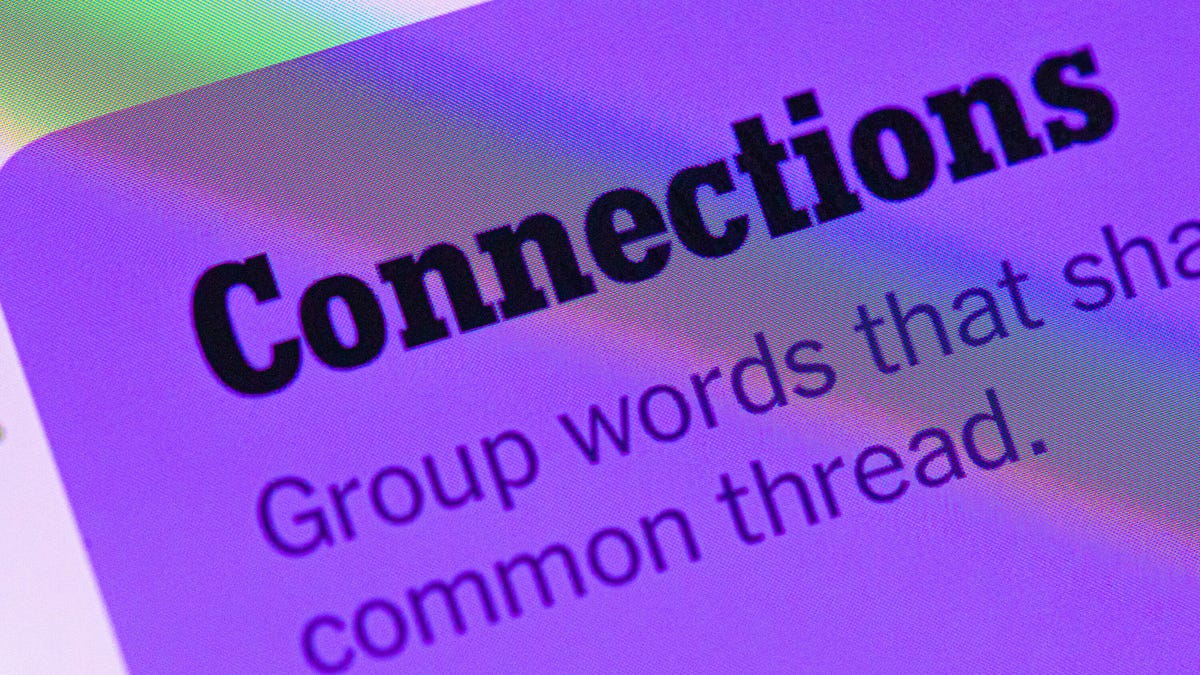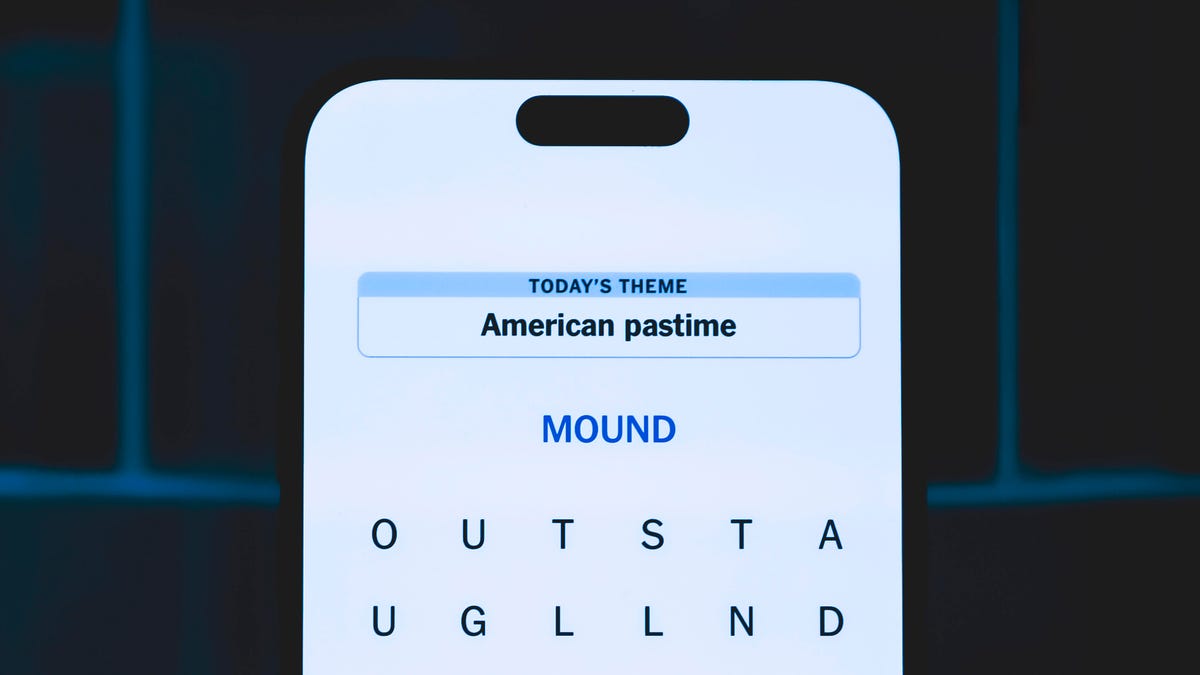Technologies
ChatGPT: Why Everyone’s Obsessed With This Mind-Blowing AI Chatbot
This artificial intelligence bot is an impressive writer and conversationalist. But be careful how much you trust its answers.

There’s a new AI bot in town: ChatGPT. And you’d better take notice.
The tool, from a power player in artificial intelligence, lets you type questions using natural language that the chatbot answers in conversational, if somewhat stilted, language. The bot remembers the thread of your dialog, using previous questions and answers to inform its next responses.
It’s a big deal. The tool seems pretty knowledgeable if not omniscient. It can be creative and its answers can sound downright authoritative. A few days after its launch, more than a million people are trying out ChatGPT.
But its creator, the for-profit research lab called OpenAI, warns that ChatGPT «may occasionally generate incorrect or misleading information,» so be careful. Here’s a look at why this ChatGPT is important and what’s going on with it.
What is ChatGPT?
ChatGPT is an AI chatbot system that OpenAI released in November to show off and test what a very large, powerful AI system can accomplish. You can ask it countless questions and often will get an answer that’s useful.
For example, you can ask it encyclopedia questions like, «Explaining Newton’s laws of motion.» You can tell it, «Write me a poem,» and when it does, say, «Now make it more exciting.» You ask it to write a computer program that’ll show you all the different ways you can arrange the letters of a word.
Here’s the catch: ChatGPT doesn’t exactly know anything, though. It’s an AI trained to recognize patterns in vast swaths of text harvested from the internet, then further trained with human assistance to deliver more useful better dialog. The answers you get may sound plausible and even authoritative, but they might well be entirely wrong, as OpenAI warns.
Chatbots have been of interest for years to companies looking for ways to help customers get what they need and to and AI researchers trying to tackle the Turing Test. That’s the famous «Imitation Game» that computer scientist Alan Turing proposed in 1950 as a way to gauge intelligence: Can a human judge conversing with a human and with a computer tell which is which?
What kinds of questions can you ask?
You can ask anything, though you might not get an answer. OpenAI suggests a few categories, like explaining physics, asking for birthday party ideas and getting programming help.
I asked it to write a poem, and it did, though I don’t think any literature experts would be impressed. I then asked it to make it more exciting, and lo, ChatGPT pumped it up with words like battlefield, adrenaline, thunder and adventure.
One wacky example shows how ChatGPT is willing to just go for it in domains where people would fear to tread: a command to write «a folk song about writing a rust program and fighting with lifetime errors.»
ChatGPT’s expertise is broad, and its ability to follow a conversation is notable. When I asked it for words that rhymed with «purple,» it offered a few suggestions, then when I followed up «How about with pink?» it didn’t miss a beat. (Also, there are a lot more good rhymes for «pink.»)
When I asked, «Is it easier to get a date by being sensitive or being tough?» GPT responded, in part, «Some people may find a sensitive person more attractive and appealing, while others may be drawn to a tough and assertive individual. In general, being genuine and authentic in your interactions with others is likely to be more effective in getting a date than trying to fit a certain mold or persona.»
You don’t have to look far to find accounts of the bot blowing people’s minds. Twitter is awash with users displaying the AI’s prowess at generating art prompts and writing code. Some have even proclaimed «Google is dead,» along with the college essay. We’ll talk more about that below.
Who built ChatGPT?
ChatGPT is the brainchild of OpenAI, an artificial intelligence research company. Its mission is to develop a «safe and beneficial» artificial general intelligence system or to help others do so.
It’s made splashes before, first with GPT-3, which can generate text that can sound like a human wrote it, and then DALL-E, which creates what’s now called «generative art» based on text prompts you type in.
GPT-3, and the GPT 3.5 update on which ChatGPT is based, are examples of AI technology called large language models. They’re trained to create text based on what they’ve seen, and they can be trained automatically — typically with huge quantities of computer power over a period of weeks. For example, the training process can find a random paragraph of text, delete a few words, ask the AI to fill in the blanks, compare the result to the original and then reward the AI system for coming as close as possible. Repeating over and over can lead to a sophisticated ability to generate text.
Is ChatGPT free?
Yes, for now at least. OpenAI CEO Sam Altman warned on Sunday, «We will have to monetize it somehow at some point; the compute costs are eye-watering.» OpenAI charges for DALL-E art once you exceed a basic free level of usage.
What are the limits of ChatGPT?
As OpenAI emphasizes, ChatGPT can give you wrong answers. Sometimes, helpfully, it’ll specifically warn you of its own shortcomings. For example, when I asked it who wrote the phrase «the squirming facts exceed the squamous mind,» ChatGPT replied, «I’m sorry, but I am not able to browse the internet or access any external information beyond what I was trained on.» (The phrase is from Wallace Stevens’ 1942 poem Connoisseur of Chaos.)
ChatGPT was willing to take a stab at the meaning of that expression: «a situation in which the facts or information at hand are difficult to process or understand.» It sandwiched that interpretation between cautions that it’s hard to judge without more context and that it’s just one possible interpretation.
ChatGPT’s answers can look authoritative but be wrong.
The software developer site StackOverflow banned ChatGPT answers to programming questions. Administrators cautioned, «because the average rate of getting correct answers from ChatGPT is too low, the posting of answers created by ChatGPT is substantially harmful to the site and to users who are asking or looking for correct answers.»
You can see for yourself how artful a BS artist ChatGPT can be by asking the same question multiple times. I asked twice whether Moore’s Law, which tracks the computer chip industry’s progress increasing the number of data-processing transistors, is running out of steam, and I got two different answers. One pointed optimistically to continued progress, while the other pointed more grimly to the slowdown and the belief «that Moore’s Law may be reaching its limits.»
Both ideas are common in the computer industry itself, so this ambiguous stance perhaps reflects what human experts believe.
With other questions that don’t have clear answers, ChatGPT often won’t be pinned down.
The fact that it offers an answer at all, though, is a notable development in computing. Computers are famously literal, refusing to work unless you follow exact syntax and interface requirements. Large language models are revealing a more human-friendly style of interaction, not to mention an ability to generate answers that are somewhere between copying and creativity.
Can ChatGPT write software?
Yes, but with caveats. ChatGPT can retrace steps humans have taken, and it can generate actual programming code. You just have to make sure it’s not bungling programming concepts or using software that doesn’t work. The StackOverflow ban on ChatGPT-generated software is there for a reason.
But there’s enough software on the web that ChatGPT really can work. One developer, Cobalt Robotics Chief Technology Officer Erik Schluntz, tweeted that ChatGPT provides useful enough advice that over three days, he hasn’t opened StackOverflow once to look for advice.
Another, Gabe Ragland of AI art site Lexica, used ChatGPT to write website code built with the React tool.
ChatGPT can parse regular expressions (regex), a powerful but complex system for spotting particular patterns, for example dates in a bunch of text or the name of a server in a website address. «It’s like having a programming tutor on hand 24/7,» tweeted programmer James Blackwell about ChatGPT’s ability to explain regex.
Here’s one impressive example of its technical chops: ChatGPT can emulate a Linux computer, delivering correct responses to command-line input.
What’s off limits?
ChatGPT is designed to weed out «inappropriate» requests, a behavior in line with OpenAI’s mission «to ensure that artificial general intelligence benefits all of humanity.»
If you ask ChatGPT itself what’s off limits, it’ll tell you: any questions «that are discriminatory, offensive, or inappropriate. This includes questions that are racist, sexist, homophobic, transphobic, or otherwise discriminatory or hateful.» Asking it to engage in illegal activities is also a no-no.
Is this better than Google search?
Asking a computer a question and getting an answer is useful, and often ChatGPT delivers the goods.
Google often supplies you with its suggested answers to questions and with links to websites that it thinks will be relevant. Often ChatGPT’s answers far surpass what Google will suggest, so it’s easy to imagine GPT-3 is a rival.
But you should think twice before trusting ChatGPT. As with Google itself and other sources of information like Wikipedia, it’s best practice to verify information from original sources before relying on it.
Vetting the veracity of ChatGPT answers takes some work because it just gives you some raw text with no links or citations. But it can be useful and in some cases thought provoking. You may not see something directly like ChatGPT in Google search results, but Google has built large language models of its own and uses AI extensively already in search.
So ChatGPT is doubtless showing the way toward our tech future.
Technologies
Meta Wins Antitrust Case, Won’t Have to Give Up WhatsApp or Instagram
The FTC claimed Meta held an illegal monopoly in social networking.

Meta has won its antitrust case against the Federal Trade Commission. The FTC said Meta held an illegal monopoly in social networking — centering on the company’s acquisitions of WhatsApp and Instagram.
Judge James Boasberg of the US District Court for the District of Columbia released a memorandum opinion on Tuesday, stating that the FTC failed to prove its claims in court.
Don’t miss any of our unbiased tech content and lab-based reviews. Add CNET as a preferred Google source.
«Whether or not Meta enjoyed monopoly power in the past,» Boasberg wrote in the filing, «the agency must show that it continues to hold such power now.»
Boasberg initially dismissed the FTC’s complaint in 2021, stating that the agency lacked sufficient evidence that Meta holds «market power» in the social networking industry. At the time, the FTC argued that «Facebook’s course of conduct has eliminated nascent rivals,» preventing «the benefits of competition, including increased choice, quality and innovation» from developing for US social media users.
After the FTC amended its filing with information about Meta’s user numbers and acquisitions of the WhatsApp and Instagram applications, Boasberg allowed the case to proceed in 2022.
The trial began in April, and multiple high-ranking current and former Meta executives testified before the court — chief among them, Meta CEO Mark Zuckerberg. Much of Zuckerberg’s testimony focused on refuting the FTC’s primary claim, which hinged on an argument Zuckerberg made in 2008: «It is better to buy than compete.»
Meta’s win means the company will be able to continue operating WhatsApp and Instagram unimpeded. Had the FTC proven its claims in court, Meta likely would have had to break these applications off into their own separate social networking companies.
Meta released a public statement on Tuesday, stating that the decision «recognizes that Meta faces fierce competition» in the social networking industry.
«Our products are beneficial for people and businesses and exemplify American innovation and economic growth,» the statement read. «We look forward to continuing to partner with the Administration and to invest in America.»
FTC Director of Public Affairs Joe Simonson said the agency is «deeply disappointed» with the outcome of the case.
«The deck was always stacked against us with Judge Boasberg, who is currently facing articles of impeachment,» he said. «We are reviewing all our options.»
Republican lawmakers have tried multiple times to impeach Boasberg, a frequent political target of the Trump administration.
While Meta’s antitrust case may be over, it didn’t take place in a vacuum. Google recently settled a case with the FTC that resulted in the search giant being told it must share limited search and user-interaction data with «qualified competitors.» Another case targeting Google’s AI overview feature is ongoing in the European Union, as a group of publishers claims the company is causing harm due to a loss of traffic, readership, and revenue.
Technologies
Today’s NYT Connections Hints, Answers and Help for Nov. 19, #892
Here are some hints and the answers for the NYT Connections puzzle for Nov. 19, #892

Looking for the most recent Connections answers? Click here for today’s Connections hints, as well as our daily answers and hints for The New York Times Mini Crossword, Wordle, Connections: Sports Edition and Strands puzzles.
Today’s NYT Connections puzzle has one of those classic purple categories, where four words have hidden connected words inside them. If you need help sorting them into groups, you’re in the right place. Read on for clues and today’s Connections answers.
The Times now has a Connections Bot, like the one for Wordle. Go there after you play to receive a numeric score and to have the program analyze your answers. Players who are registered with the Times Games section can now nerd out by following their progress, including the number of puzzles completed, win rate, number of times they nabbed a perfect score and their win streak.
Read more: Hints, Tips and Strategies to Help You Win at NYT Connections Every Time
Hints for today’s Connections groups
Here are four hints for the groupings in today’s Connections puzzle, ranked from the easiest yellow group to the tough (and sometimes bizarre) purple group.
Yellow group hint: Not petite.
Green group hint: You learn this in driver’s ed.
Blue group hint: Nevermore!
Purple group hint: Look for hidden words having to do with the body.
Answers for today’s Connections groups
Yellow group: Stocky.
Green group: Steer.
Blue group: Second words in Poe stories, after «The.»
Purple group: Organ plus a letter.
Read more: Wordle Cheat Sheet: Here Are the Most Popular Letters Used in English Words
What are today’s Connections answers?
The yellow words in today’s Connections
The theme is stocky. The four answers are husky, solid, squat and thick.
The green words in today’s Connections
The theme is steer. The four answers are direct, guide, lead and shepherd.
The blue words in today’s Connections
The theme is second words in Poe stories, after «The.» The four answers are cask, fall, masque and pit.
The purple words in today’s Connections
The theme is organ plus a letter. The four answers are colony (colon), hearth (heart), lunge (lung) and skink (skin).
Technologies
Today’s NYT Strands Hints, Answers and Help for Nov. 19 #626
Here are hints and answers for the NYT Strands puzzle for Nov. 19, No. 626.

Looking for the most recent Strands answer? Click here for our daily Strands hints, as well as our daily answers and hints for The New York Times Mini Crossword, Wordle, Connections and Connections: Sports Edition puzzles.
Today’s NYT Strands puzzle is easier than most days. It helps if you know world religions. Some of the answers are difficult to unscramble, so if you need hints and answers, read on.
I delve into the rules for Strands in this story.
If you’re looking for today’s Wordle, Connections and Mini Crossword answers, you can visit CNET’s NYT puzzle hints page.
Read more: NYT Connections Turns 1: These Are the 5 Toughest Puzzles So Far
Hint for today’s Strands puzzle
Today’s Strands theme is: Divinely inspired.
If that doesn’t help you, here’s a clue: Different beliefs.
Clue words to unlock in-game hints
Your goal is to find hidden words that fit the puzzle’s theme. If you’re stuck, find any words you can. Every time you find three words of four letters or more, Strands will reveal one of the theme words. These are the words I used to get those hints, but any words of four or more letters that you find will work:
- BRIM, BEAR, PEST, RIGS, ROPE, GRIP, GRIPE, GOES, GUILE, MAIM, GRAD
Answers for today’s Strands puzzle
These are the answers that tie into the theme. The goal of the puzzle is to find them all, including the spangram, a theme word that reaches from one side of the puzzle to the other. When you have all of them (I originally thought there were always eight but learned that the number can vary), every letter on the board will be used. Here are the nonspangram answers:
- IMAM, RABBI, PRIEST, MONK, BUDDHA, PROPHET
Today’s Strands spangram
Today’s Strands spangram is RELIGIOUSFIGURES. To find it, start with the R that’s three letters to the right on the bottom row, and wind up.
-

 Technologies3 года ago
Technologies3 года agoTech Companies Need to Be Held Accountable for Security, Experts Say
-

 Technologies3 года ago
Technologies3 года agoBest Handheld Game Console in 2023
-

 Technologies3 года ago
Technologies3 года agoTighten Up Your VR Game With the Best Head Straps for Quest 2
-

 Technologies4 года ago
Technologies4 года agoBlack Friday 2021: The best deals on TVs, headphones, kitchenware, and more
-

 Technologies4 года ago
Technologies4 года agoVerum, Wickr and Threema: next generation secured messengers
-

 Technologies4 года ago
Technologies4 года agoGoogle to require vaccinations as Silicon Valley rethinks return-to-office policies
-

 Technologies4 года ago
Technologies4 года agoOlivia Harlan Dekker for Verum Messenger
-

 Technologies4 года ago
Technologies4 года agoiPhone 13 event: How to watch Apple’s big announcement tomorrow
